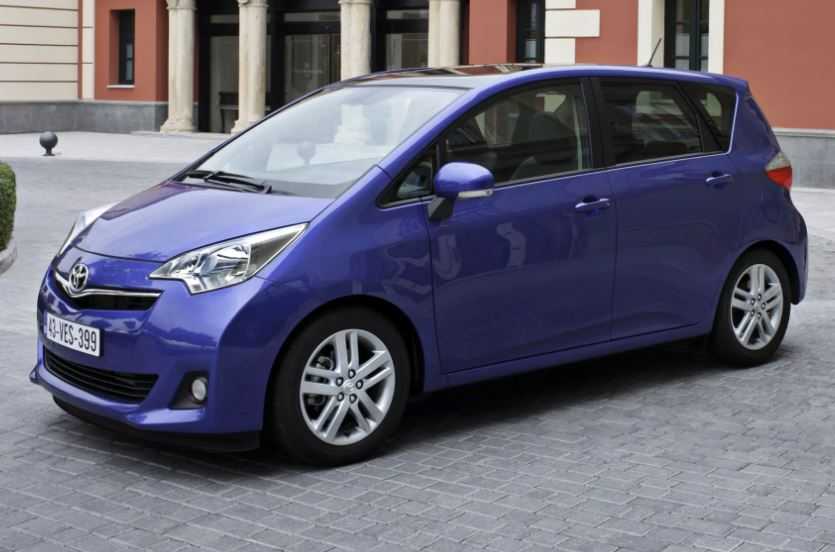
Short test: Toyota Verso-S 1.33 VVT-i Luna (Prins VSI 2.0)
There are already several providers in Slovenia that promise cheap and almost free driving. Of course, this is not entirely true, and even so, the cost of installation, if done professionally, is not cheap at all.
But still - with an average use of the car, sooner or later it pays off! Also the environment. Namely, liquefied petroleum gas or autogas is an energy-efficient and environmentally friendly source of energy. It is extracted from natural gas or from the refining of crude oil. To make it easier to spot, it is flavored for normal use and is more energy efficient than most other energy sources (fuel oil, natural gas, coal, wood, etc.). When burning automotive gas, harmful emissions (CO, HC, NOX, etc.) are half that of gasoline engines.
Compared to a gasoline engine, the use of autogas has a number of advantages: high octane number, quick gasification and mixture homogeneity, longer engine and catalyst life, complete combustion of the gas-air mixture, quieter engine operation, lower fuel costs and, ultimately, long distances. due to two types of fuel.
The conversion kit also includes a fuel tank that adapts to each vehicle individually and fits in the trunk or in place of the spare wheel. The liquefied gas is converted to a gaseous state through a pipeline, valves and an evaporator and supplied to the engine through an injection device, which is also adapted to the specific vehicle. From a safety point of view, gas as a fuel is completely safe. The LPG tank is much more powerful than the gasoline tank. It is made of steel and is additionally reinforced.
In addition, the system is protected by shut-off valves that close the fuel tank and fuel flow along the line in a fraction of a second in the event of mechanical damage to the unit. Due to its location in the trunk, the gas tank is less affected in an accident than the gas tank, but if the worst actually happens, then in the event of a gas leak and fire, the gas burns directionally and does not spill like gasoline. Therefore, insurance companies do not consider gas engines as a risk group and do not require additional payments.
Gas processing is already well known in Europe and the most widely used gas appliances are in the Netherlands, Germany and Italy. Thus, it is not surprising that gas appliances from the Dutch manufacturer Prins, which were first installed in cars by the Carniolan company IQ Sistemi, are considered the best. The company has been installing these systems for about six years and they offer a five-year warranty or 150.000 kilometers.
The Prince gas system must be serviced every 30.000 kilometers, regardless of the period during which it is transported (i.e. more than a year). Carniolan also works closely with its parent company, including in the development area. As such, they are honored to develop Valve Care, an electronic valve lubrication system that provides full valve lubrication under all engine operating conditions and only works in conjunction with Prins autogas.
And how is this in practice?
During the test, we tested the Toyota Verso S equipped with the new Prins VSI-2.0 system. The system is controlled by a new, much more powerful computer, consisting of gas injectors from the Japanese manufacturer Keihin, which were developed in collaboration with Prince and provide real-time gas injection or in the same cycle as gasoline injection.
The system also includes a high power evaporator that meets the system's needs for installation in vehicles with engine power up to 500 "horsepower". An additional advantage of the new system is the possibility of subsequent transfer to any other car, even if it is of a different brand or an engine of a different power and volume.
Switching between fuel is simple and is triggered by a switch built into the cab. The new switch is more transparent and shows the remaining gas quantity with five LEDs. Driving on gas in the Verso was hardly noticeable, at least after the behavior and engine running. This is not the case with performance, which is only marginally inferior and most drivers (and passengers) may not even notice. Thus, there are practically no concerns about gas conversion, other than the price. The Prins VSI gas system costs 1.850 euros, to which you have to add 320 euros for the Valve Care system.
The cost is definitely high for cheaper cars and negligible for more expensive ones. Retrofitting is probably more feasible, especially in the case of vehicles with more powerful engines, including due to the more favorable price for natural gas, which currently ranges from 0,70 to 0,80 euros in Slovenia. It should be noted that 100-5 percent more gasoline is consumed per 25 kilometers of gasoline (depending on the propane-butane ratio, in Slovenia it is mainly 10-15 percent more), but the final calculation may surprise many. Of course, positively for those who ride more often, and negatively for those who travel less often with their hobbies.
Toyota Verso-S 1.33 VVT-i Luna (Prince VSI 2.0)
Basic data
Technical information
| engine: | 4-cylinder - 4-stroke - in-line - petrol - displacement 1.329 cm3 - maximum power 73 kW (99 hp) at 6.000 rpm - maximum torque 125 Nm at 4.000 rpm. |
|---|---|
| Energy transfer: | engine-driven front wheels - 6-speed manual transmission - tires 185/65 R 15 H (Bridgestone Ecopia). |
| Capacity: | 170 km/h top speed - 0-100 km/h acceleration in 13,3 s - fuel consumption (ECE) 6,8/4,8/5,5 l/100 km, CO2 emissions 127 g/km. |
| Mass: | empty vehicle 1.145 kg - permissible gross weight 1.535 kg. |
| External dimensions: | length 3.990 mm – width 1.695 mm – height 1.595 mm – wheelbase 2.550 mm – trunk 557–1.322 42 l – fuel tank XNUMX l. |
Our measurements
| T = 17 ° C / p = 1.009 mbar / rel. vl. = 38% / odometer status: 11.329 km | |
| Acceleration 0-100km: | 12,3s |
|---|---|
| 402m from the city: | 18,4 years ( 123 km / h) |
| Flexibility 50-90km / h: | 11,3 / 13,8s (IV/V) |
| Flexibility 80-120km / h: | 16,7 / 20,3s (Sun./Fri.) |
| Maximum speed: | 170km / h (WE.) |
| Braking distance at 100 km / h: | 40,1m |
| AM table: | 41m |
evaluation
Thanks to the constantly improving gas appliances, which work in such a way that the driver hardly notices when he is driving on gas, the gas future seems rather bright. If device prices fell with more consumption, the solution would be even easier for many.
We praise and reproach
environmental friendliness
transparent switch
possibility of choosing a petrol station (installation under a license plate or next to a petrol station)

